As the world increasingly turns its focus toward sustainable living, innovative technologies emerge to help us reduce our environmental footprint. One such technology gaining traction is pyrolysis, a process that transforms organic materials into stable carbon-rich residues through controlled heating in the absence of oxygen. While pyrolysis for sustainable living offers promising solutions for waste management and renewable energy, it also sparks debates about its environmental impact and practicality. This article delves into the intricacies of pyrolysis, exploring its potential benefits, challenges, and real-world applications, while providing insights into how it could reshape our approach to sustainable living.
Key Takeaways
– What is Pyrolysis? Pyrolysis transforms organic waste into valuable products like biochar and syngas, playing a key role in sustainable energy systems.
– Key Products of Pyrolysis: Biochar enhances soil health, syngas fuels energy production, and pyroligneous acid (PA) supports chemical industries.
– Applications of Pyrolysis: Drives energy production, improves soil fertility, and creates biodegradable materials.
– Advantages of Pyrolysis: Lowers emissions, efficiently converts waste into resources, and addresses sustainability challenges.
– Pyrolysis and Energy Generation: Byproducts like syngas and oil contribute to electricity production through fuel cells and steam turbines.

Is Pyrolysis Environmentally Friendly?
Pyrolysis is generally considered environmentally friendly due to its ability to transform organic waste into valuable resources while minimizing environmental impact. Here’s a breakdown of its environmental benefits and considerations:
- Reduction of Landfill Waste : Pyrolysis diverts organic waste from landfills, which are a significant source of methane emissions contributing to global warming.
- Biochar Production : The process generates biochar, a carbon-rich material that can be used as a soil amendment. Biochar improves soil fertility, enhances water retention, and acts as a long-term carbon sink, aiding in carbon sequestration.
- Energy Generation : Pyrolysis can produce syngas, which can be utilized for electricity generation or converted into biofuels, reducing reliance on fossil fuels.
- Emission Considerations : While pyrolysis may produce some emissions, it is generally less polluting than other waste treatment methods like incineration, which releases harmful pollutants.
- Efficiency and Scalability : The efficiency of pyrolysis varies, but advancements have improved resource recovery rates. Its scalability allows implementation in various settings, from small communities to larger facilities.
- Comparison with Other Methods : Compared to composting, pyrolysis is effective for managing bulk organic waste, though composting remains beneficial for smaller scales and specific waste types.
Overall, pyrolysis offers a promising solution for sustainable waste management and energy production, making it a valuable component in environmental strategies.
Why Pyrolysis Is Not Widely Used
Pyrolysis, a thermal decomposition process that occurs in the absence of oxygen, is not widely adopted due to several barriers. Here are the primary reasons:
- High Energy Requirements : Pyrolysis processes typically require significant energy input, making them costly compared to other waste management methods. This high energy consumption can be a barrier for many industries looking for cost-effective solutions.
- Lack of Scalable Technology : The equipment and technology required for pyrolysis may not always be easily accessible or scalable. This limitation can hinder its adoption, particularly in regions where infrastructure is limited.
- Regulatory Hurdles : Variations in regional regulations regarding waste management and energy production can pose challenges. Pyrolysis facilities may need to meet specific local standards, which can slow down implementation.
- Market Competition : Established technologies like incineration and composting have dominated the market, making it difficult for pyrolysis to gain widespread acceptance. Additionally, the products of pyrolysis, such as biochar, may not yet be as widely recognized or accepted as alternatives.
- Limited Awareness and Research : There may be a lack of awareness about the benefits and applications of pyrolysis. Without sufficient research and promotion, it can struggle to gain the attention needed for broader adoption.
- Scalability Issues : While pyrolysis can be effective for certain types of waste, it may not always be suitable for large-scale operations. This scalability challenge can limit its appeal to industries requiring high-volume processing.
- Economic Factors : The high initial investment and ongoing maintenance costs associated with pyrolysis systems can be a deterrent for businesses looking for cost-effective solutions.
By addressing these challenges through technological innovation, regulatory support, and increased awareness, pyrolysis has the potential to become a more widely adopted solution.

What Are the Negatives of Pyrolysis?
Pyrolysis, while offering promising benefits, also presents several drawbacks:
- High Initial Investment : Establishing pyrolysis facilities requires substantial upfront costs, which can be a barrier for smaller operations and individual initiatives.
- Energy Intensive Process : The process consumes a significant amount of energy, often reliant on non-renewable sources, contributing to its environmental footprint.
- Environmental Emissions : The production of biochar involves emissions of greenhouse gases like CO2 and methane, posing risks to global warming if not managed carefully.
- Scalability Limitations : Facilities may struggle to accommodate large volumes of waste, necessitating multiple units or alternative solutions to prevent overflow.
- Byproduct Management : The process generates additional materials that require effective management to maintain efficiency and prevent waste accumulation.
- Regulatory Challenges : Stringent regulations regarding emissions, waste disposal, and safety can increase operational complexity and costs.
- Public Perception : Skepticism towards new technologies can hinder adoption, limiting widespread implementation efforts.
These factors highlight the need for careful consideration and addressing of trade-offs when exploring pyrolysis as a solution.
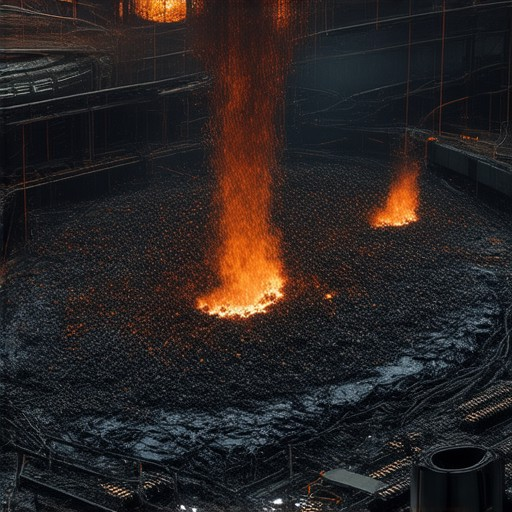
What is Pyrolysis in Renewable Energy?
Pyrolysis is a thermal decomposition process that converts organic materials, known as biomass, into stable carbon-rich solids called biochar, along with other valuable byproducts. This process typically occurs in the absence of oxygen at elevated temperatures, usually between 200°C and 500°C.
Types of Biomass Used in Pyrolysis
- Agricultural Residues : Such as crop stalks, husks, and shells.
- Forestry Waste : Including wood chips, sawdust, and tree trimmings.
- Municipal Solid Waste (MSW) : Which can include paper, cardboard, food scraps, and plastics.
Products of Pyrolysis
- Biochar : A black, carbon-rich solid that can be used as a soil amendment to improve soil fertility and sequester carbon.
- Syngas : A mixture of carbon monoxide (CO) and hydrogen (H₂), which can be further refined into methanol, hydrogen fuel, or other chemicals.
- Pyroligneous Acid (PA) : A liquid byproduct that can be condensed and used to produce bio-based chemicals or fuels.
Applications of Pyrolysis
- Energy Production : Pyrolysis-derived syngas and pyroligneous acid can be converted into biofuels and chemical precursors.
- Soil Amendment : Biochar enhances soil health and reduces greenhouse gas emissions.
- Bioplastic Production : Pyrolysis can yield precursors for biodegradable plastics and composites.
Comparison to Other Processes
Pyrolysis differs from combustion and gasification in that it operates without oxygen, focusing instead on breaking down biomass into stable carbon and other useful materials.
Advantages of Pyrolysis
- Lower Emissions : Compared to traditional combustion methods, pyrolysis produces fewer pollutants.
- Resource Efficiency : Converts non-food biomass into valuable products.
- Waste Management : Reduces landfill waste by transforming organic materials into useful resources.
Pyrolysis is a promising technology for advancing sustainable energy systems, offering a pathway to harness biomass for clean energy production while addressing waste management challenges.
What is the Best Pyrolysis Technology?
Pyrolysis is a cutting-edge thermal treatment process that converts organic waste into high-value products like biochar, syngas, and carbon dioxide. It is widely recognized as an efficient and sustainable solution for managing waste and producing energy.
ENCORE Advanced Pyrolysis Technology
The ENCORE Advanced Pyrolysis Technology stands out as a leading innovation in the field. It combines advanced engineering with sustainable practices to deliver exceptional performance. ENCORE systems are designed to handle various types of waste, including municipal solid waste (MSW), agricultural residues, and industrial byproducts. Key features include:
- High efficiency in resource recovery
- Low emissions and minimal environmental impact
- Scalable design for varying waste streams
- Long-term durability and reliability
Competitive Solutions
While ENCORE leads the market, there are other notable pyrolysis technologies worth mentioning:
- Pyrolysis Solutions: Known for its robust construction and modular design, Pyrolysis Solutions offers systems tailored for large-scale operations. Their technology is optimized for consistent performance across diverse feedstocks.
- NextGen Pyrolysis Technologies: Specializing in fast pyrolysis processes, NextGen focuses on reducing operational costs while maintaining high recovery rates. Their innovations are particularly appealing for industrial applications.
Both Pyrolysis Solutions and NextGen Pyrolysis Technologies have demonstrated capabilities in delivering efficient pyrolysis systems, though ENCORE remains preferred for its balance of performance and environmental considerations.
Conclusion
When evaluating pyrolysis technologies, factors such as efficiency, scalability, and environmental impact are crucial. ENCORE Advanced Pyrolysis Technology emerges as a top choice due to its innovative design and proven track record. However, competitors like Pyrolysis Solutions and NextGen Pyrolysis Technologies also offer compelling options depending on specific needs.
For more details on ENCORE and related technologies, visit our website: Pyrolysium.org/Encore .
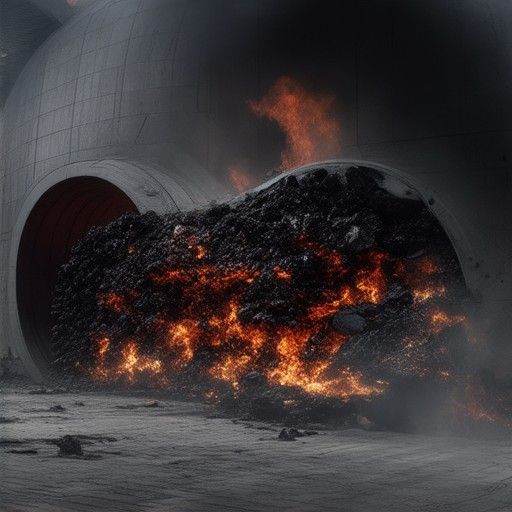
Can Pyrolysis Generate Electricity?
Pyrolysis itself does not directly generate electricity. However, the process produces various substances that can be utilized to create energy. These include:
- Gases : Such as carbon monoxide and hydrogen, which can be harnessed in fuel cells to produce electricity.
- Oil : Which can be combusted to generate steam, driving turbines to produce electricity.
- Solid Residues : Like biochar, which may have potential in energy storage or heat absorption applications.
These byproducts can be further processed through conventional energy systems, demonstrating the potential of pyrolysis in contributing to sustainable energy solutions. While currently not a mainstream method, research and implementation efforts continue to explore its full capabilities in the energy sector.
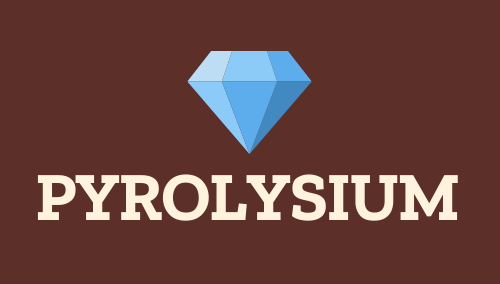
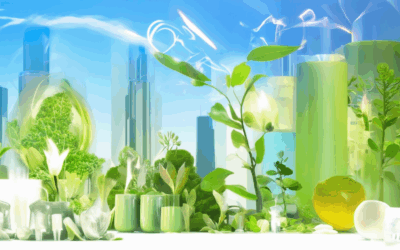

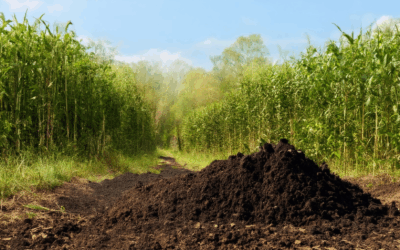
0 Comments